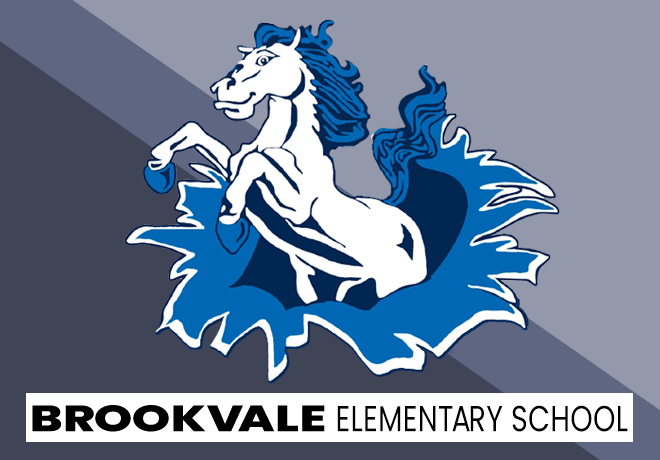COMBINATION CLASSES 2022-2023: Frequently Asked Questions
As we finalize plans at Brookvale School for the 2022-2023 school year it is an important time for me to reach out to you with information about the upcoming school year. Because of the declining number of students and because students don’t always neatly match the numbers of teachers at schools, “combinations”, “combos”, or “split classes” are formed to accommodate a group of students at a grade level. This is a common occurrence across Fremont Unified School District as well as the state of California and the nation. Student projections and staffing allocations for the school year issued by the district and our numbers indicate that we will have a 2nd/3rd grade combination class this school year. The class will be taught by Mrs. Hatfield. I have included common questions and concerns about combination classes for you to review.
Will my child in the older grade be challenged?
All children can be challenged in a combination class, and combo teachers are responsible for providing a challenging, stimulating environment for all students. The topics covered in a combination class will enable students in each grade level to access the learning and Common Core Standards of their particular grade. Studies note that students in the older grade of the combo benefit from the placement with younger students. When older students teach information and skills to their younger classmates, the academic performance and IQ scores of the older students improve dramatically (Veenman 1995). Furthermore, older-grade students work well with younger students in a combination setting and are able to develop leadership skills that are not always possible in a single grade class.
Will my child in the lower grade be overwhelmed?
Teachers and administrators are careful to select children who can be successful and compatible in a combination class. In any class, there are a variety of students who are at different social, emotional, and academic levels. Lower-grade students have an opportunity to observe, emulate, and imitate a wide range of behaviors modeled by the older students that they might not have been exposed to in a single-grade classroom. Lower-grade children are also intellectually stimulated by older children. Mattern and Yates report that lower-grade students have a “broader social experience and increased opportunities to lead and follow, and to form stable peer relationships” (1995). Younger grade students can rely on the teacher to answer their instructional questions but can also receive assistance from older students in the class. Students in the lower grade can also benefit from enriched learning by their exposure to curricular material designed for a higher grade (Society for Developmental Education 1993).
Will a child learn less in a combination class?
The University of Louisville’s Center for Gifted Students conducted a study to compare the achievement of students in single-grade settings and in combination settings. Their study found that 20% of the students in combination classes significantly outscored the single-grade classes on standardized tests in for key areas: word identification, reading comprehension, mathematically computations, and mathematical problem solving (Viadero 1996). Veenman’s research of multi-age classes spanned 56 classrooms in 12 countries. He argues that there is no realistic evidence for the assumption that student learning may suffer in classes with students of different grades and ages (1995). What he did find in his 1995 study were significant differences in the affective areas of learning. Student attitudes toward learning, school, self-concept, and personal and social adjustment were higher in the students who had participated in combination classes. Students in the combination classes were able to form relationships with a wider variety of students than would’ve been possible in the traditional same-age classroom.
How do children benefit from a combination class?
Differences within a class of students from different grades can be a source of rich intellectual and social benefits. The lower-grade students perceive the older students as being able to contribute something, and students in the older grade see the younger ones as in need of their contributions. These mutually reinforcing perceptions create a climate of expected cooperation that is beneficial to all the children in the class, and to the teacher. Research indicates that combining students from different grades is desirable and beneficial to all students. Gaustad argues that students benefit from the ranges and diversity of a combination class because it “promotes cognitive and social growth, reduces anti-social behavior, and facilitates the use of research-based developmentally appropriate instructional practices” (1997). An important conceptual foundation exists in a combination class: combos reflect an emphasis on students’ individual needs and progression, rather than the whole class progression through prescribed curriculum at the same time and pace. Students in combination classes are provided with a classroom environment that has significantly more positive outcomes. Combination arrangements can lend themselves to integrated curriculum, cooperative learning, differentiated instruction, cross-age tutoring and learning in a more naturalistic setting.
How is it determined who can teach a combination class?
The teacher who is chosen to lead a combination class must be adept at differentiated instruction for multiple ability levels and multiple subjects. The greatest challenge with a combination class is coverage of subjects that are unique to grade levels, such as the topic-specific areas of science and social studies. At Brookvale, we have many teachers with experience in many grade levels as well as with teaching combination classes. Your child could not be in better hands. Teachers within a grade level will often work together to try and provide instruction for students with same-aged peers for a portion of the school day when scheduling allows. By working together in grade level teams, teachers of combination classes can make certain that all topics in a grade level are adequately covered, even if they do not cover the topic at the same time as another class in that grade.
Class lists will not be finalized until mid-August. Classroom organization is a very thoughtful and time-consuming process. Our teachers spend a considerable amount of time creating well balanced groupings. When building classes, both combination and grade alike classes, teachers and administrators take into consideration many factors including academic achievement, social emotional development, gender, learning needs, behavior needs, friendships, and physical development. Once classes are finalized in August we will not make changes. On Maze Day after all paperwork is submitted you will receive your child’s placement. Parent requests to have students not placed in the combination class will not be accepted. I can assure you that classroom compositions and student placements will be thought through carefully and diligently.
Brookvale is deeply committed to providing high quality and well-rounded educational experiences for all our students.
In Partnership,
Malinda Elliott

